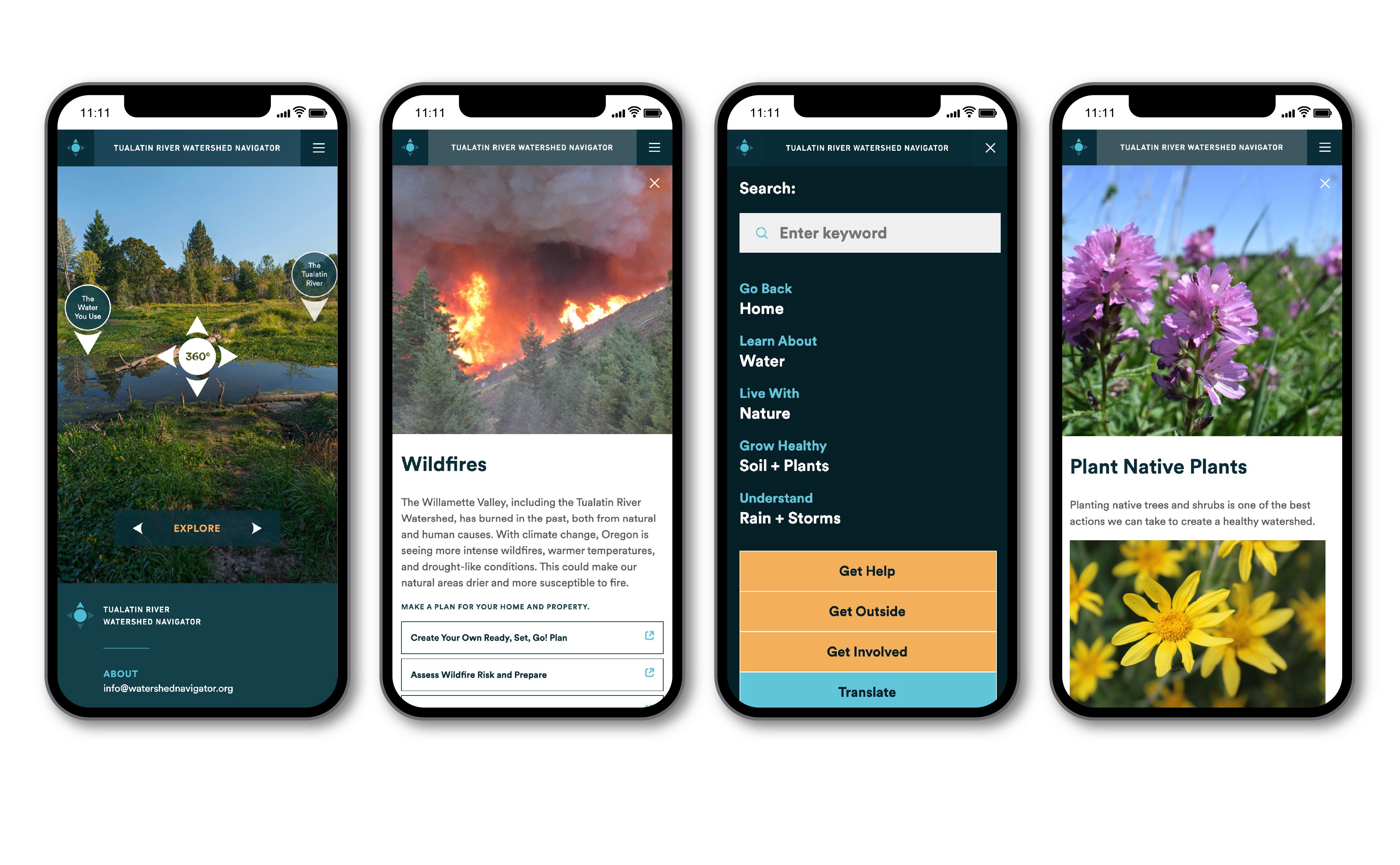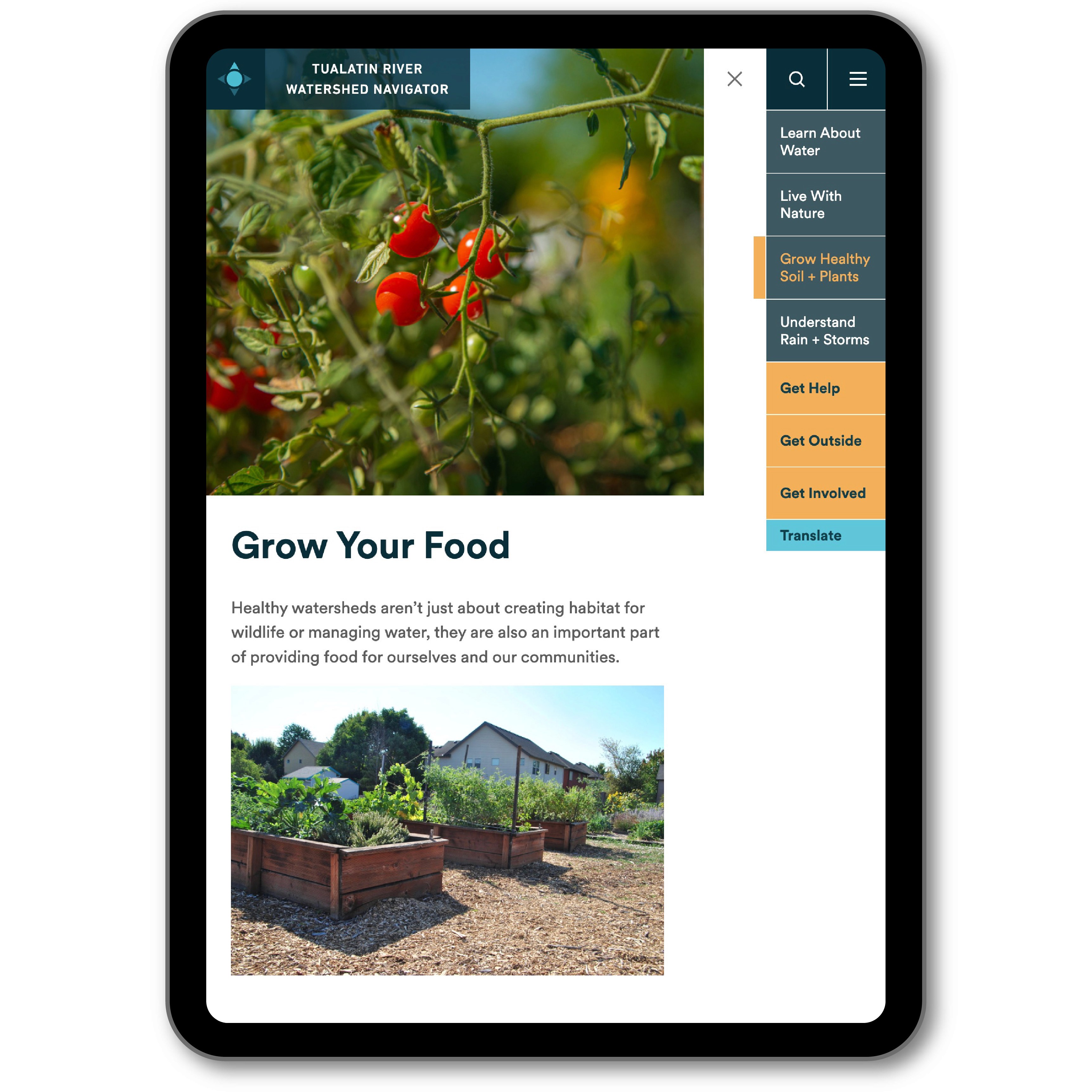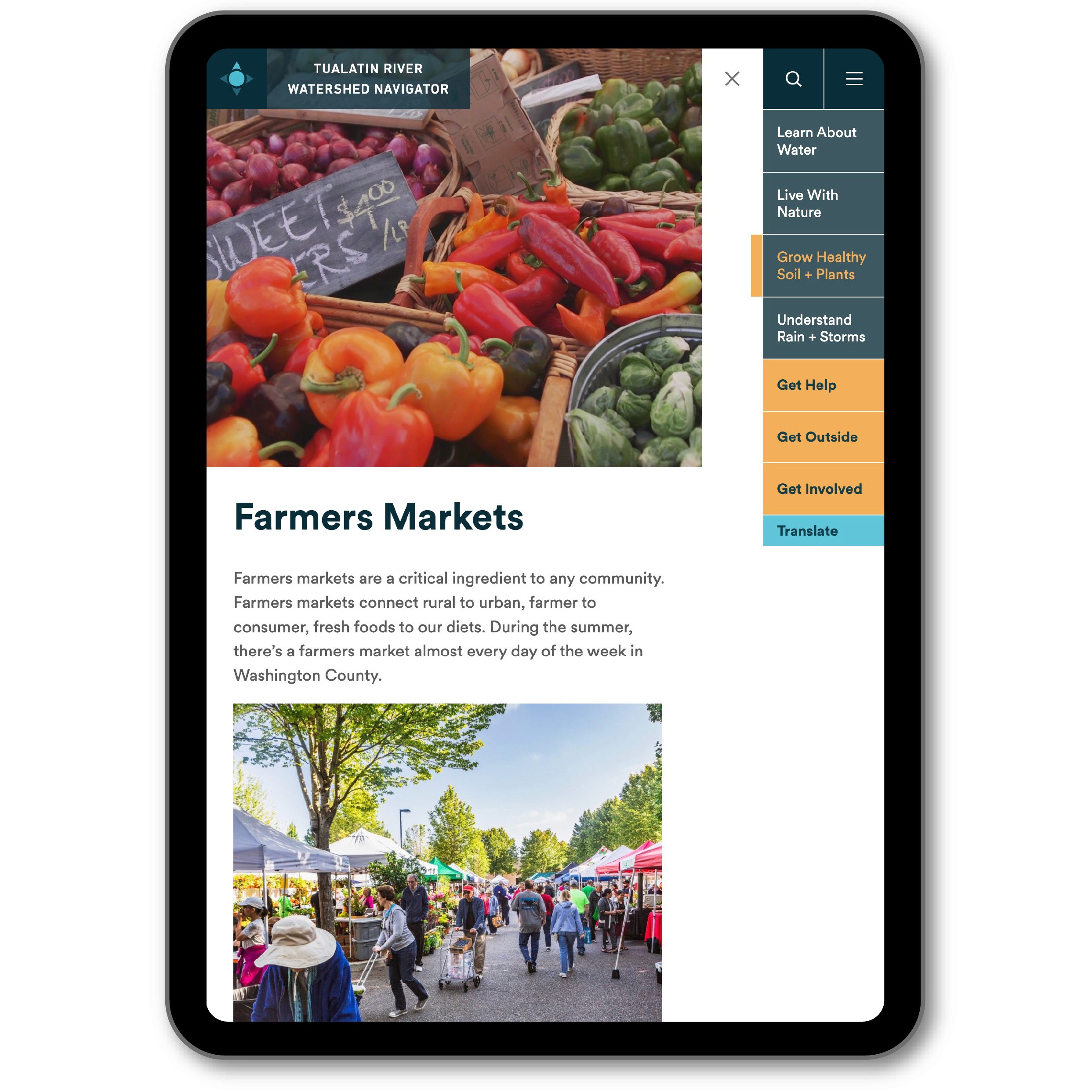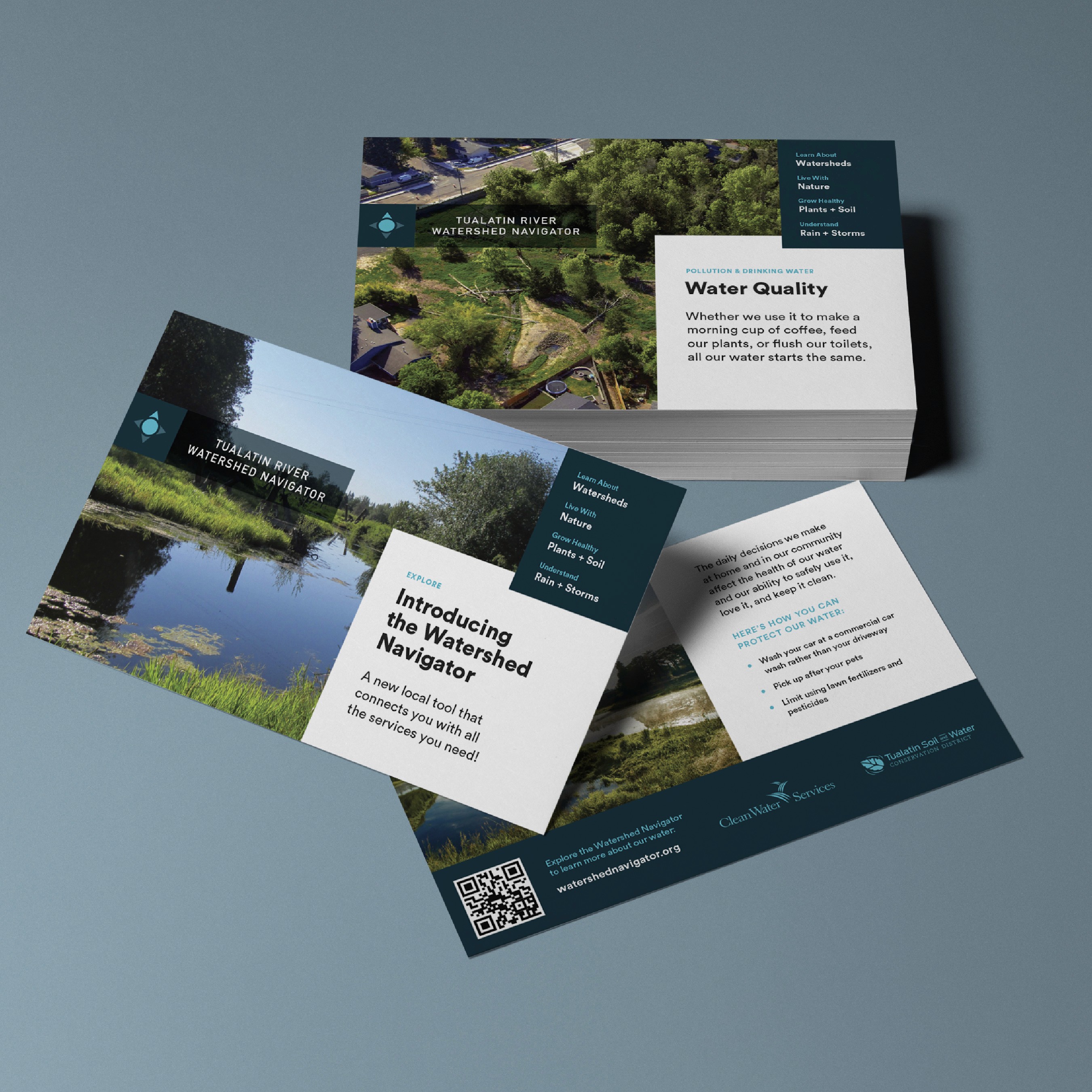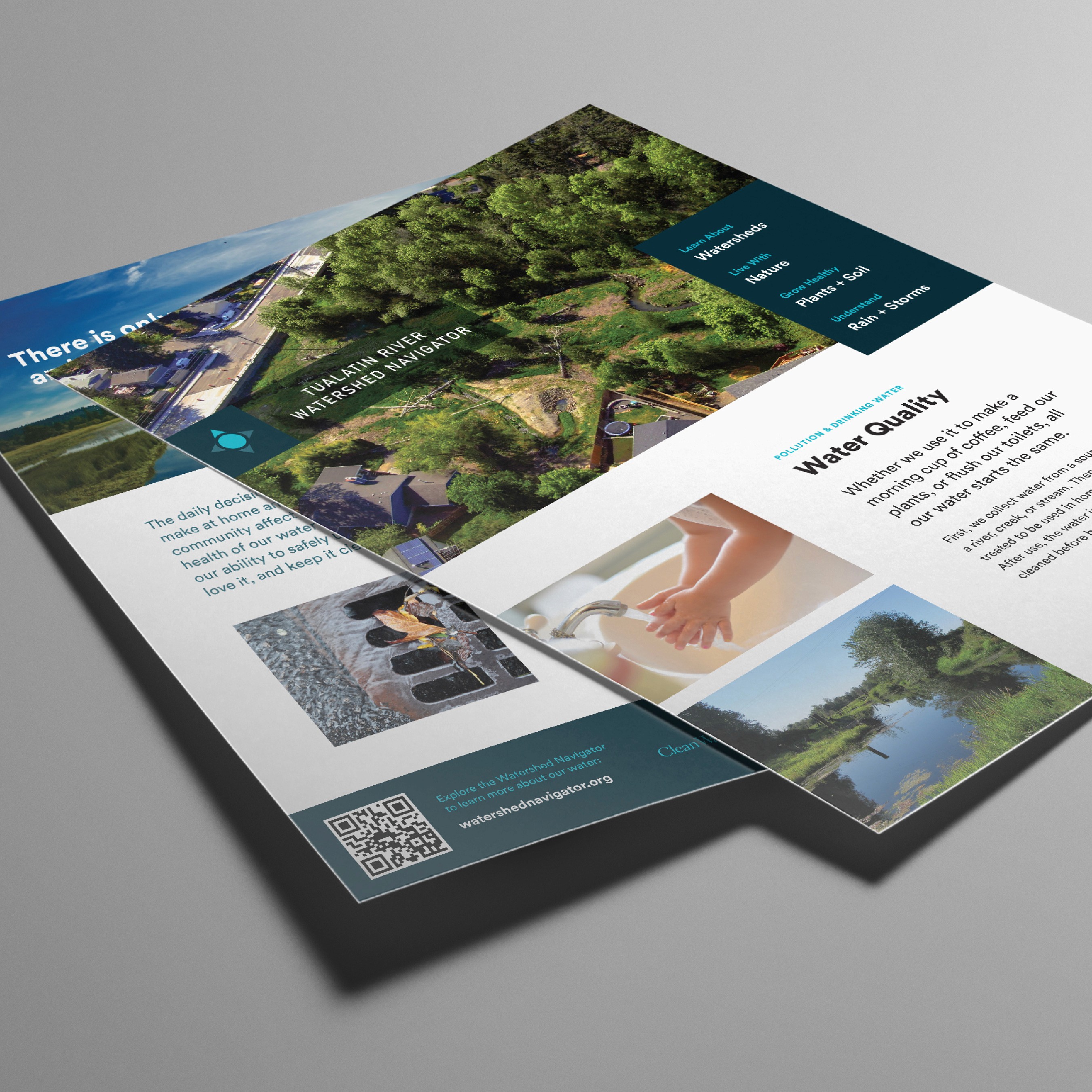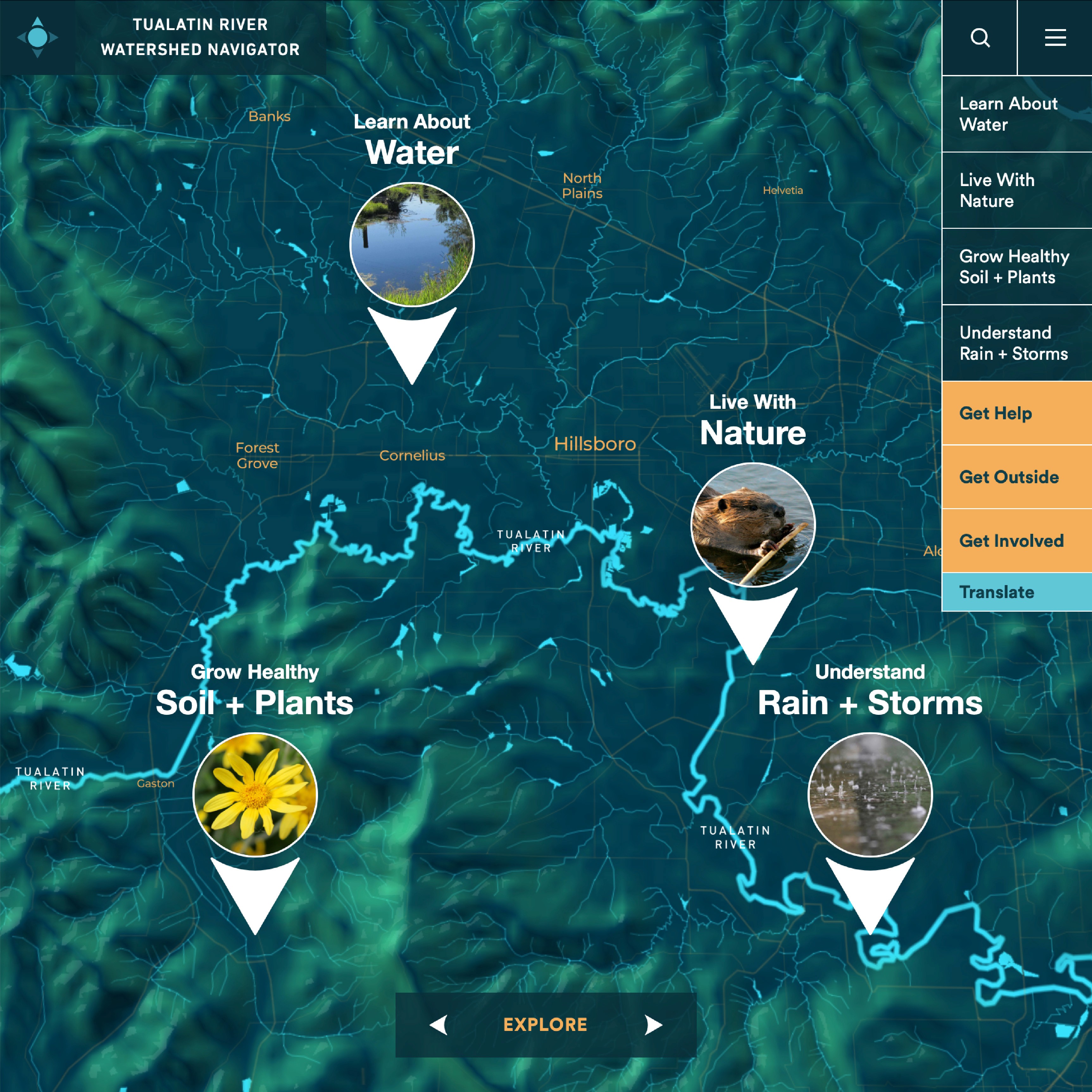Client
Partner Client
Origin Development
Support Development
As a dynamic, living resource, the resulting Navigator combined text, interactive maps, external links and references to homes, yards, neighborhoods, and the local environment. We wanted the structure to dynamically engage, rather than simply “tell” the audience stuff, so we crafted a set of "choose your own adventure" operations in lieu of a standard top-down menu structure.

The site's flat, modular navigational structure means users are always a click away from the original home/landing interactive Mapbox experience, always inviting further exploration. The site was featured as part of Design Rush's Best Design Trends of 2022.
